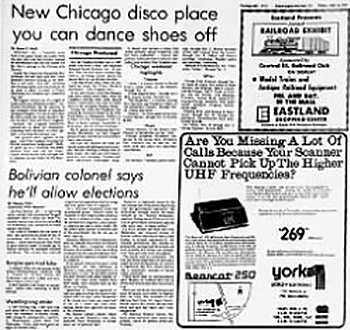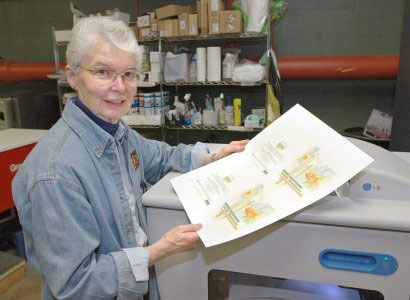I wonder if the announcement that Tumblr was banning pornographic content was perhaps inevitable, but not for the official and unofficial reasons currently being disseminated by the media.
The surface reasons seems to be tied into the confluence between technology and profits. The IOS App Store would no longer allow the Tumblr App because of an isolated child pornography incident. Since most Smartphone users rely on Apps, not allowing it would seriously lessen Tumblr’s overall use and scope. But why target Tumblr? Was it simply the, according to some sources, the 20 percent porn content?
It may seem that Tumblr was directly put between the proverbial rock and hard place, even though the microblog is a free service. An article in The Verge succinctly paraphrases the new policy:
“Banned content includes photos, videos, and GIFs of human genitalia, female-presenting nipples, and any media involving sex acts, including illustrations. The exceptions include nude classical statues and political protests that feature nudity. The new guidelines exclude text, so erotica remains permitted. Illustrations and art that feature nudity are still okay — so long as sex acts aren’t depicted — and so are breastfeeding and after-birth photos.” The wording of Tumblr’s announcement seems to both evoke and invoke arguments about obscenity that occurred in the 1950s and 1960s.
LGBTQ sexual pioneer Chuck Renslow started out as a physique photographer, and he definitely was pushing social boundaries during the 1950s with his homoerotic (as close to nude was possible, and one could often see that the posing straps were painted on) photos. He, like many other in this line of work, were “coding” their visuals, because it was one of the few ways gay men could experience their erotic desires and fantasies safely and privately. Many outfits mailed nude photos and films in plain envelopes, but these were often confiscated by the Post Office and the perpetrators, both the senders and receivers, punished.
Some of these incidents ended up in the court system. Renslow’s case ended in victory, as the judge made the ruling that if one deemed these photos obscene, so would certain masterpieces of art, especially from the Graeco-Roman period.
The Manual vs. Day case, which went to the United States Supreme Court, held that magazines consisting of semi-nude or nude males are not obscene and the Post Office cannot interfere with their dissemination through the mail. The case is notable for its ruling that photographs of nude men are not obscene, an implication which opened the U.S. mail to nude male pornography, especially those whose audience was gay men.
Tumblr of course is certainly not contained physically in brown, unmarked envelopes, but what is interesting is that Tumblr seems to be agreeing with that 1950s judge. Agreeing to some extent, yes, but also opening up once more some of the time-worn arguments about the complex relationship between sexuality, artistic expression, violence, and how this relationship builds and shapes an audience.
Going back to my initial statement, it seems inevitable that something of this nature would happen, because it’s obvious our means of communication have changed drastically since the days of postage stamps and nudie photographs and envelopes, and later, moving images of sexual acts in theaters that charged admission only to adults: physical mediums that exist in a controlled spatial situation.
What Tumblr and those who support restricting what they deem porn (for them, porn equals genitals which equals sexual acts) fail to recognize is not of course the nanosecond dissemination of mostly amateur depictions of sex which could result in more potentially dangerous situations: no, they fail to recognize the aesthetics (which tie into social contexts, of course) of a wide variety of LGBTQ pornography from the 1970s and 1980s, especially.
For example, Al Parker responded to the AIDS crisis by combining sexual acts and documentary in his film High Tech. Jack Deveau offers what one could claim is a documentary of gay life during the "hippie" era in Left-Handed. So many others of that period usually offer narrative structures: the sex acts aren’t just sex acts per se, but components in forms that explore the larger social issues of the time. And even some of the J. Brian films, which were not made to specifically address any social or moral issues, could be seen as living documents of gay sexual history.


The question remains as to how one could apply any standard of evaluation to any medium which communicates the erotic universally, but it seems a rather generalized case could be made that the older the porn, the more chances it could be determined to be aesthetically or historically significant. But the burden of proof would fall on the user, and in today’s lightning-paced communication environment, time is an enemy, rather than, as before, space.
Yet at this juncture, it seems like the only possible solution here is diversification. Perhaps Tumblr’s free-for-all ethos caused this implosion. Given the fluid nature of social media, those who used Tumblr, especially LGBTQ persons who still exist in various states of marginalization, will have to regroup, and unfortunately, some might claim, not return to closets or ghettos, but establish in their own tech-savvy ways other spaces for erotic expression.
















 Join our Email List
Join our Email List Like Us on Facebook
Like Us on Facebook Instagram
Instagram Youtube
Youtube Follow Us on Twitter
Follow Us on Twitter Follow us on Pinterest
Follow us on Pinterest